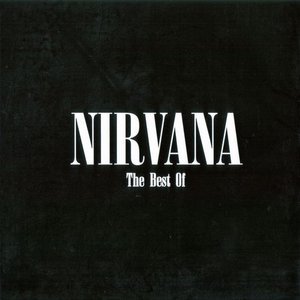



What is different? Is anything the same? Cobain’s challenging and somewhat abstract lyrics are quite far removed from the usual straight-forward, storytelling lyrics of most country music, and as such, allow Simpson’s director (Matt Mahurin) to create a more dreamlike and far less realistic video than is usually seen in this genre. A fan since junior high, when he first heard Nevermind, Simpson’s intent with this “In Bloom” cover was to “make a very beautiful and pure homage to Kurt.” Purists may scoff, but the subtle change in lyrics – bringing love into the picture and implying that our redneck is an object of pity (because he can’t love) rather than pure scorn (because he’s ignorant), is an interesting one.Ĭompare this video to the other country music videos you have watched this term. The change in lyrics was an error at first – Simpson actually misheard the Nirvana lyrics – but has since become his standard lyrics in performance. …and by doing so, subtley changes the meaning. However, Simpson changes the lyrics of the chorus to:ĭon’t know what it means to love someone. For the most part the message of the song remains as Cobain intended – it is still an indictment of redneck listeners who don’t understand the meaning of an artist’s music. Simpson’s singing is well-within typical country performance style, so a fan may not notice the unusual phrases if they do not listen closely to the lyrics. It is unusual too, for a country song to feature lyrics that are quite this opaque, and certainly lyrics like “Sell the kids for food” or “Reproductive glands” feel a bit out of place in the standard country music playlist. There is an expanded string and horn section (at about 2:35), somewhat out of character for standard country music, which works to change the tone of the song from ominous and mournful at the beginning to almost joyful and celebratory near the end. But there are elements that break from the traditional country sound as well. Simpson’s take on “In Bloom” has many country music hallmarks: he sings the melody (rather than yells, as Cobain does) with a distinct twang (actually authentic, as he hails from Kentucky) the sounds of steel guitar weaves throughout and there is a strong “knocking” backbeat that is familiar to country music fans. And on first listen, one major change to the lyrics is practically sacriligeous for those who know the original. That’s why, even before we hear it, a cover of “In Bloom” by country singer Sturgill Simpson tends to raise the hackles of grunge purists. The genre most stereotypically associated with “rednecks” is country music. I mean, I don’t like abusive people, and I guess that’s what that song is about, it’s an attack on them.” When asked about the song in an interview released by Geffen Records in 1992, Kurt replied, “Obviously I don’t like rednecks, I don’t like macho men. The song is a criticism of fans that mindlessly listened to the music of Nirvana but didn’t consider what Cobain was trying to say or understand the music, a sentiment also reflected in the line “Here we are now, entertain us” from “Smells Like Teen Spirit.” The performance is typically grunge – guitars are crunchy and distorted, vocals are ground out or sung in a gruff yell, and there are strong contrasts in dynamic levels between the verses and the chorus. Lead singer and songwriter of Nirvana, Kurt Cobain, wrote a catchy chorus that did make people sing along, even those who did not understand the lyrics, and therein lays the irony. Source: Permission: This material has been reproduced in accordance with the University of Saskatchewan interpretation of Sec.30.04 of the Copyright Act. But what are more interesting about this performance, for our discussion, are the lyrics of the song. Of course, the humour in the video comes from the known reputation of Nirvana as the symbol of disaffected youth of the early 1990s dressed in suits and referred to as “three fine young men from Seattle”. The original 1992 video is a take on The Beatles’ first appearance on the Ed Sullivan show in 1964. We will look more closely at grunge in the next module, but the sound of grunge, if not this particular song, should be familiar to you. In 2016, country artist Sturgill Simpson released a cover of “In Bloom,” a 1992 track from the album Nevermind by iconic grunge band Nirvana. Module 10: Pop, Rock, and “Alternatives” in the 1980s and 1990s.Module 9: Latin and Country – The Next Chapters.Module 5: Early Latin Music in the US and the Evolution of Popular Song, Jazz, and Musical Theatre.Module 3: The Modern Era and The Swing Era.Module 2: The Beginnings of American Popular Music.


 0 kommentar(er)
0 kommentar(er)
